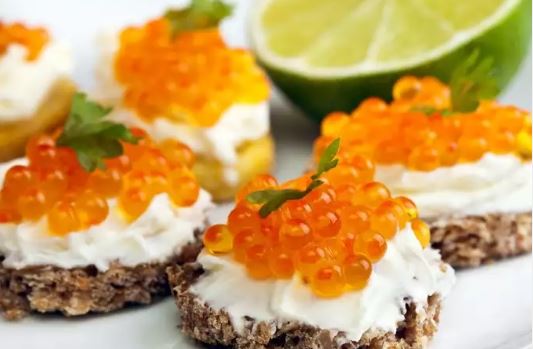
Caviar has always been tagged as the ‘dish of the wealthy’ and it is so for all the right reasons.
They are not only attractive to look at but also have a silky texture, a fishy taste and the pearl-sized beads pop in the mouth as you chew them.
But do you know that caviar was once a poor man’s food? Back in the days, Russian fishermen used to eat caviar in their daily meals.
They used to put caviar on cooked potatoes, which used to be a part of their regular diet. Caviar is also called ‘roe’ which is a name given by the Russian fishermen.
Read on to know what is caviar, why is it so expensive and how to eat it.
What is Caviar?
The term ‘Caviar’ can be directly translated to ‘unfertilized salt eggs’. Caviar is basically fish eggs which are derived only from a certain species of fish. They are usually available in black, olive green, grey and orange colour. Originally, caviar comes from a fish species called ‘sturgeon’. There are approximately 26 varieties of sturgeon available and female sturgeon fish are specially kept for the purpose of deriving caviar. Do you know that sturgeon fishes can live to be more than 100 years old?
Why is Caviar expensive?
There are different types of caviars and the price range depends on its type and quality. You will get 30 grams of caviar in approx Rs. 8,000-18,000. Beluga caviar is the most expensive variant and its price range goes even higher. While females sturgeons are bred in large quantities, you might be wondering why is caviar so expensive then? It is because a female fish takes around 10-15 years until she starts producing eggs. Earlier the female fish had to be killed in order to take out the eggs but now with technical advancements, fish-friendly methods are used which doesn’t involve killing the female fish.
How to eat Caviar
Caviar can be served along with toasts and crackers. You can also add some fresh cream, chopped onions and fresh herbs as garnish. You can also enjoy caviar along with boiled eggs. Caviar should never be served at room temperature. It should firstly be kept chilled and served in a bowl, ideally kept in a tray of crushed ice.

